About 500km Mumbai, on the banks of the mighty river Narmada, lies the old city of Maheshwar. Many historians identify Maheshwar as the ancient town of Mahishmati. It is believed Maheshwar was build on the ancient city of Somvanshya Shastrarjun Kshatriya and was the capital of the King Kartavirya Arjun, who is mentioned in the Sanskrit Epics Ramayana and Mahabharata. Much later, it became the capital of the Maratha Kings, the Holkars. Maratha Queen Ahilya Bai Holkar (1725-1795) took over the reigns of Maheshwar after her young son Male Rao Holkar, heir to the throne died, soon after her father-in-law, Malhar Rao Holkar’s death (her husband Khaderao Holkar had died almost 12 years earlier).
Ahilyabai Holkar led her armies to battle. She also transformed Indore from a small village into a magnificent city. However she herself made Maheshwar her capital and developed the fort, ghats and temples of Maheshwar, as well as many roads, wells, ghats and rest houses.. She developed many temples all across India, the most significant being the Kashi Vishwanath Temple in Varanasi. They say the sites where Ahilyabai Holkar built include Kashi, Gaya, Somnath, Ayodhya, Mathura, Haridwar, Kanchi, Avanti, Dwarka, Badrinarayan, Rameshwar and Jagannath Puri. She also supported merchants and farmers and helped them lead lives of peace and prosperity.
Ahilyabai Holkar’s Maheshwar was flourishing with art, music, literature and business enterprise. She entertained and patronised poets like Maropant and Anantaphandi, as well as scholars like Khushali Ram. Craftsmen, sculptors and artists received salaries and honours at her capital and she established a textile industry in Maheshwar.
Her efforts can be seen even today. Maheshwar is famous for its textiles, and no visit is complete without shopping for some exclusive handwoven sprees, stoles and fabrics. In fact ‘Maheshwari’ is now a coveted genre in Sarees. Rani Ahilyabai Holkar’s support to architecture and sculpture can be seen in the fabulous fort and ghat temples in Maheshwar itself. The exquisite carvings and design speak of the vibrant and rich culture of its times. Maheshwar has to be seen to be believed.
We haven’t been to Madhya Pradesh much, a fact we want to change this year (if the Covid19 situation improves). So on our road trip to Maheshwar we were apprehensive of the stay and food. All searches suggested Labbooz Cafe and Lodging as the place to stay and we promptly booked it. However, our maps app and road conditions suggested we may reach just around 8pm, a time when Labbooz is scheduled shut. So we called the Cafe and requested them to take our dinner order. The Cafe manager was, however, very sure that we would have to place our orders immediately (it was only 5 pm or so) since the staff would start preparing to shut down at 7 pm. He said our food will be left out for us. We weren’t keen to have a cold dinner so cancelled the dinner order, getting anxious at the kind of place we have booked ourselves into. Whoever closes kitchen at 7pm? But upon arriving and the following day we realised not every town moves at the speed and schedules of a major Indian city. Even though Labbooz staff close the kitchen at 7pm, they are genuinely warm and hard working people.
We stayed at Labbooz Cafe and Lodging, a quaint stay made from the erstwhile Fort Entrance Gate Guards’ Quarters. It is said Labboo is a driver to the descendent of the Holkar dynasty. The selected their premium room, which has two terraces, on in the front and one behind. The small room was very tastefully appointed and clean and dry. What more can one ask for?
The family of the Holkars still live in the fort and continue to patronise the arts, especially weaving. Sally Holkar started the Women Weave Initiative, where women are empowered as handloom weavers, trained and supplied with equipment, thread and designs, and their creations are sold nationwide. Within Maheshwar too, look for a store called Rewa which sells textiles and sprees made by the ladies in Women Weave.
An interesting thing I observed was the development of an indigenous fashion aesthetic amongst the youth who hung around the ghats. Fashionably dressed, with funky and coloured hairstyles, almost every young boy was wearing a stole and had the look of a carefully put together fashion statement. From Fresh Green Blazer with an embroidered Gold Eagle and colour fur shoes to styled hair with various shades of brown dye. The young men had taken pains to put together a fashion statement and spent as much time photographing and posing for each other, with much confidence and elan. What is their inspiration? The styles didn’t look ‘Bollywood’. Mainstream movie actors are much more conservatively fashioned. I wish there were more young ladies too, but I guess the patriarchy in the society doesn’t let them move around as freely.
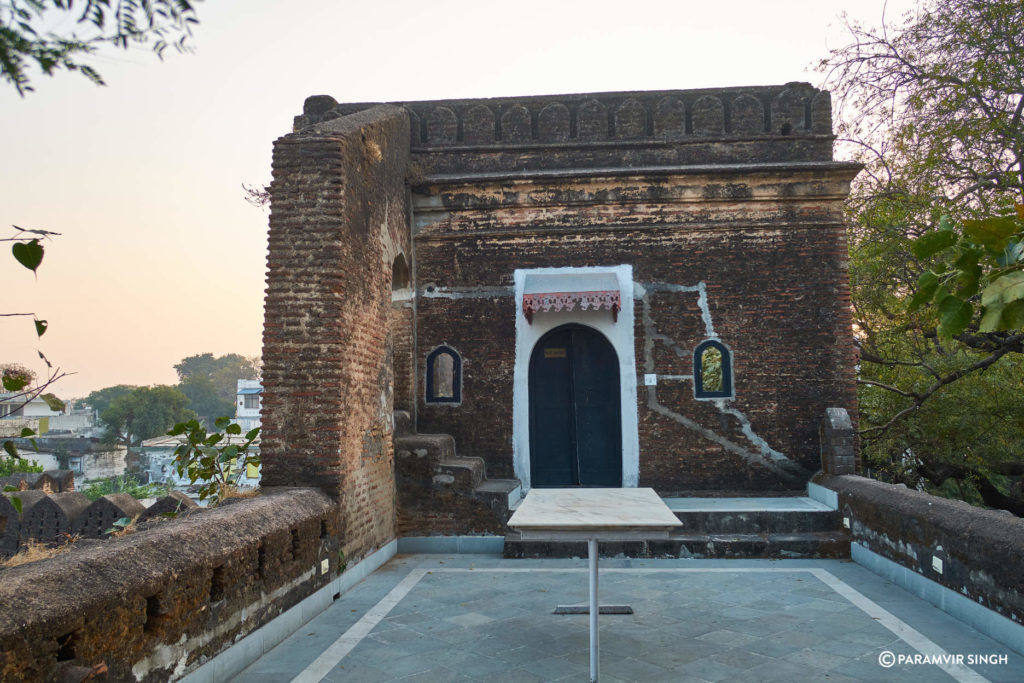
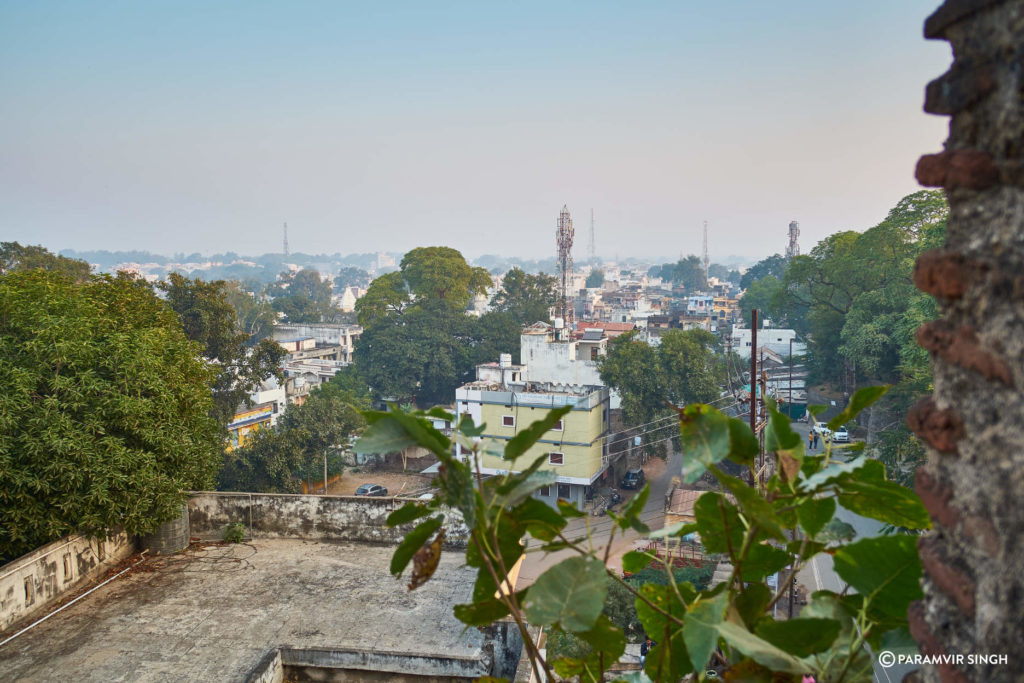
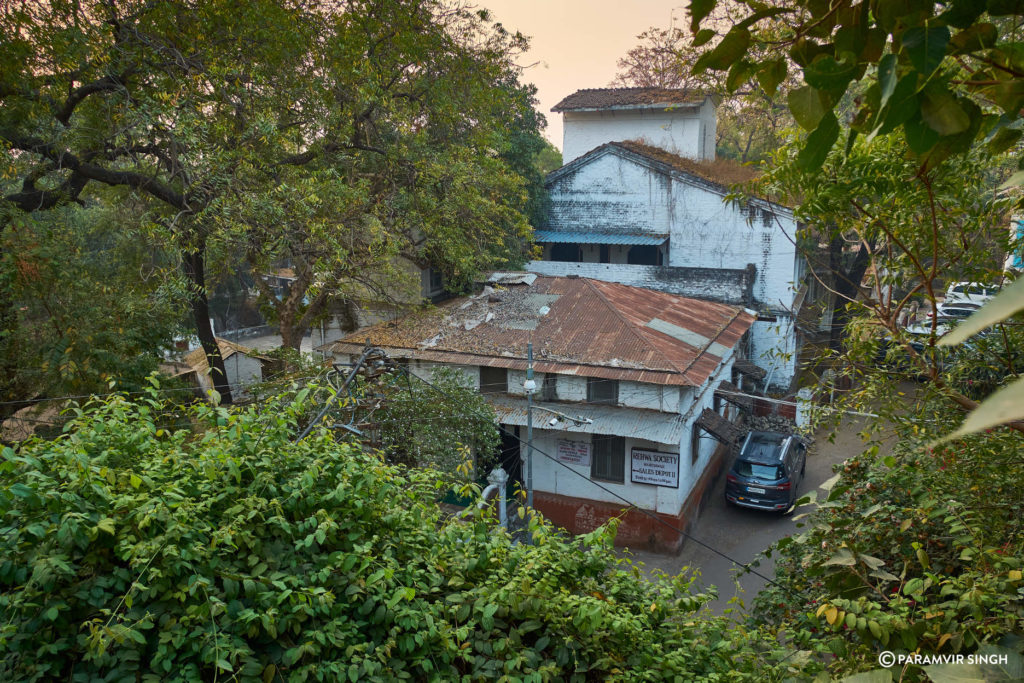
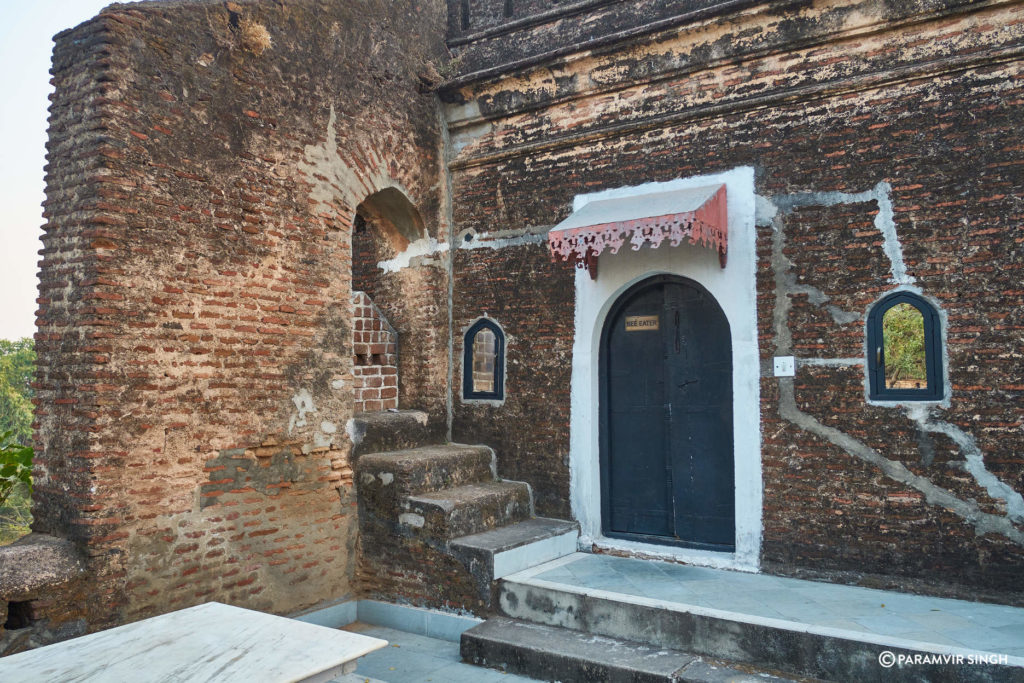
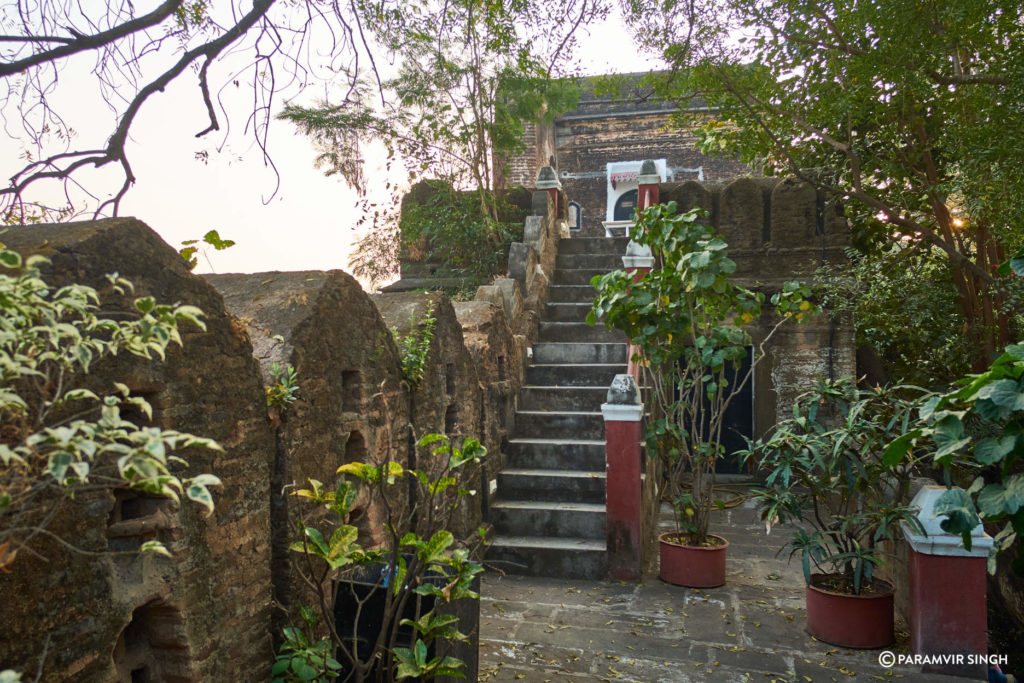
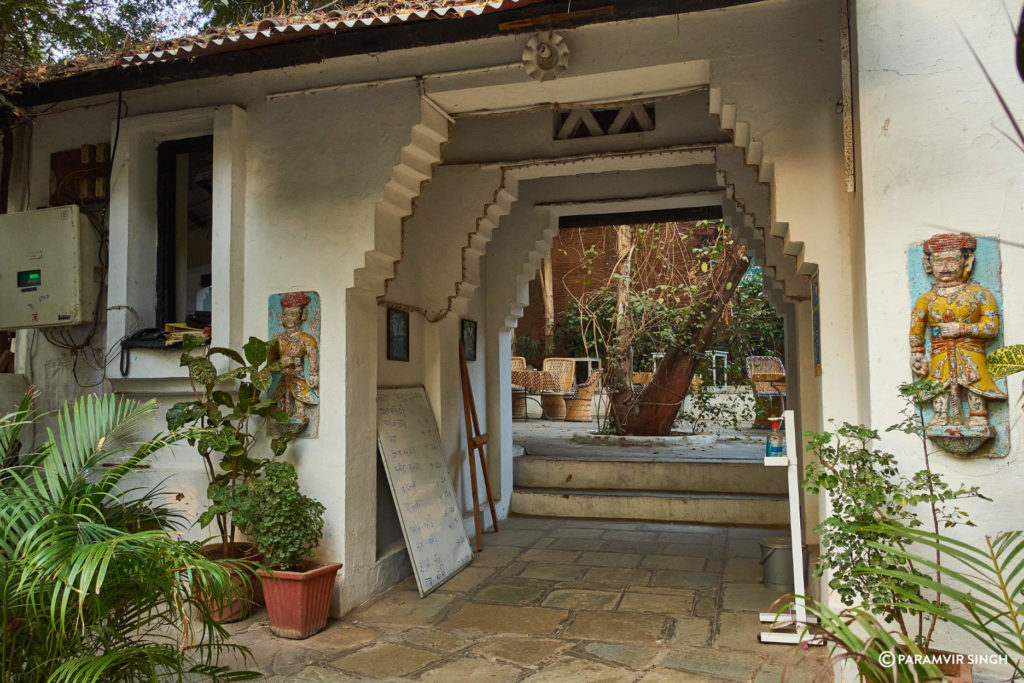
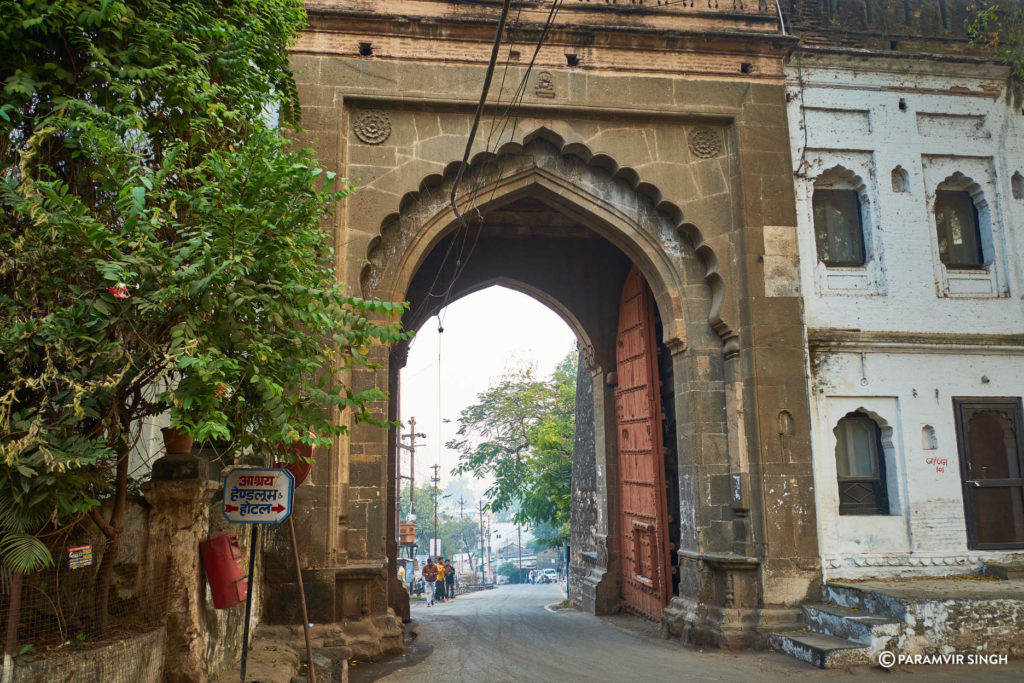
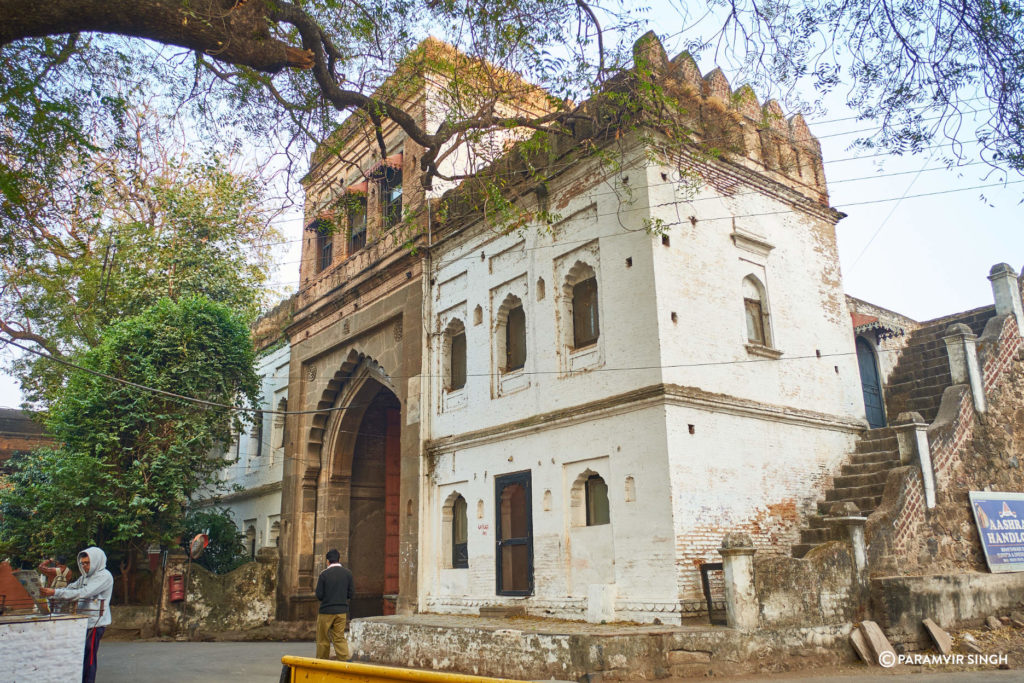
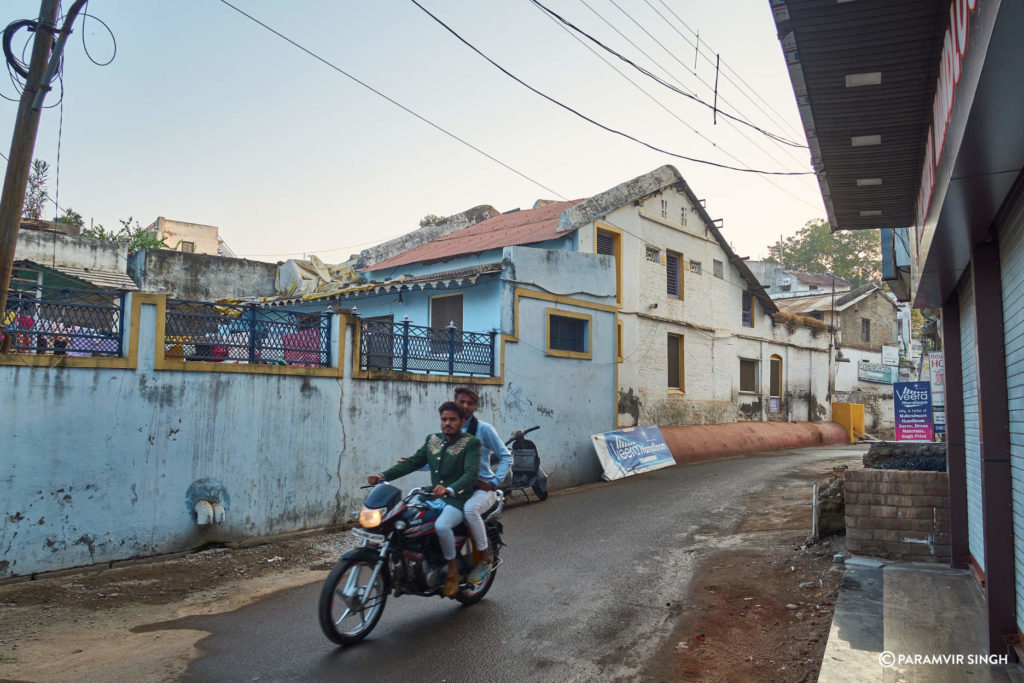
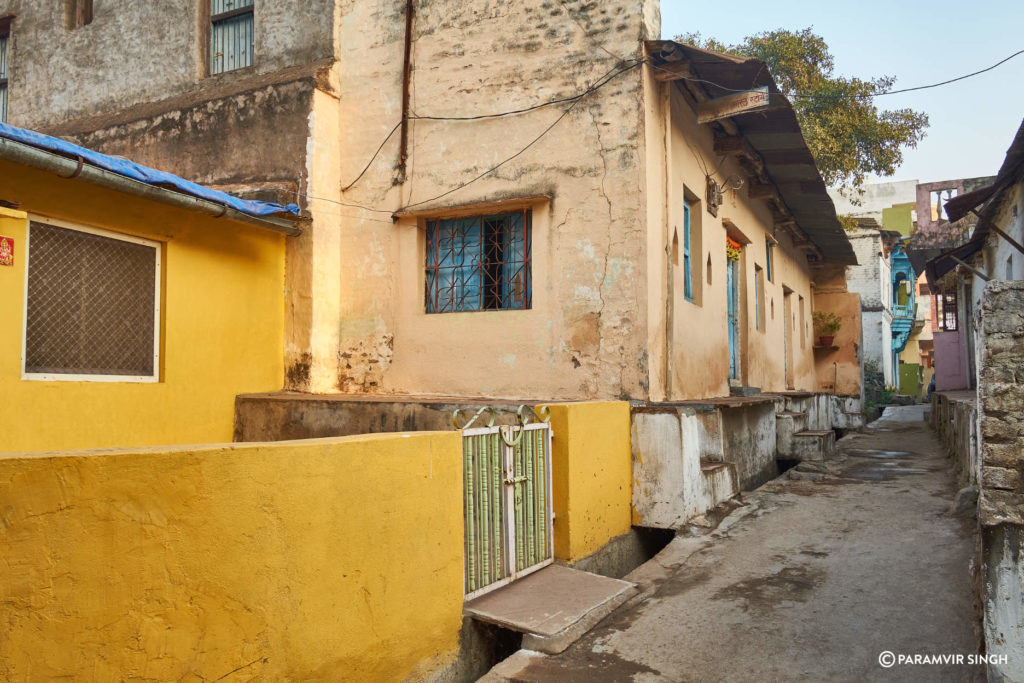
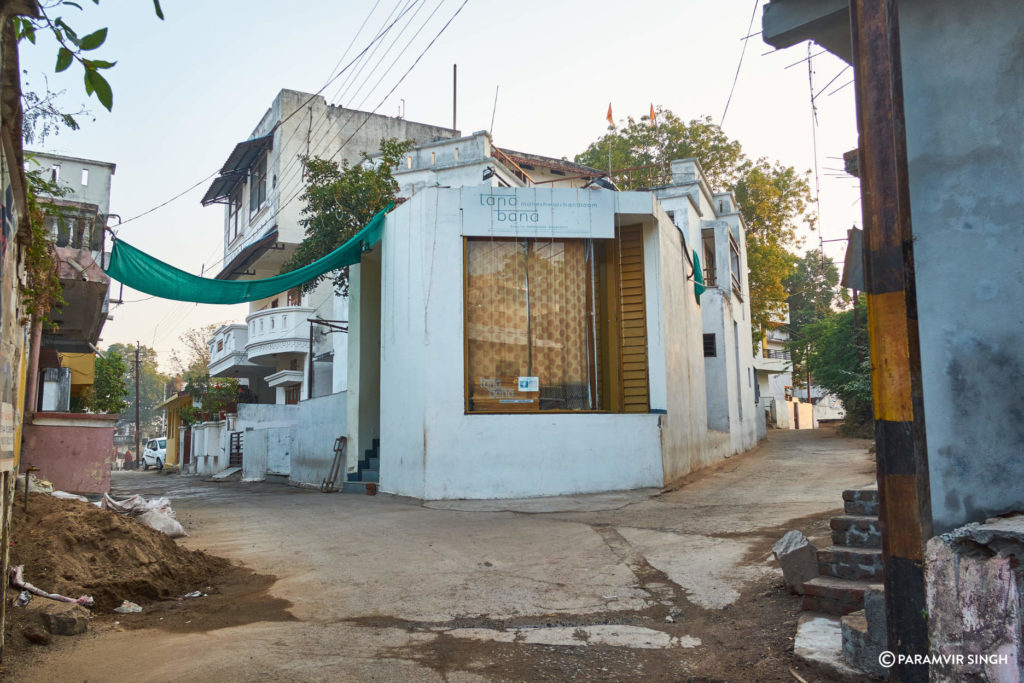
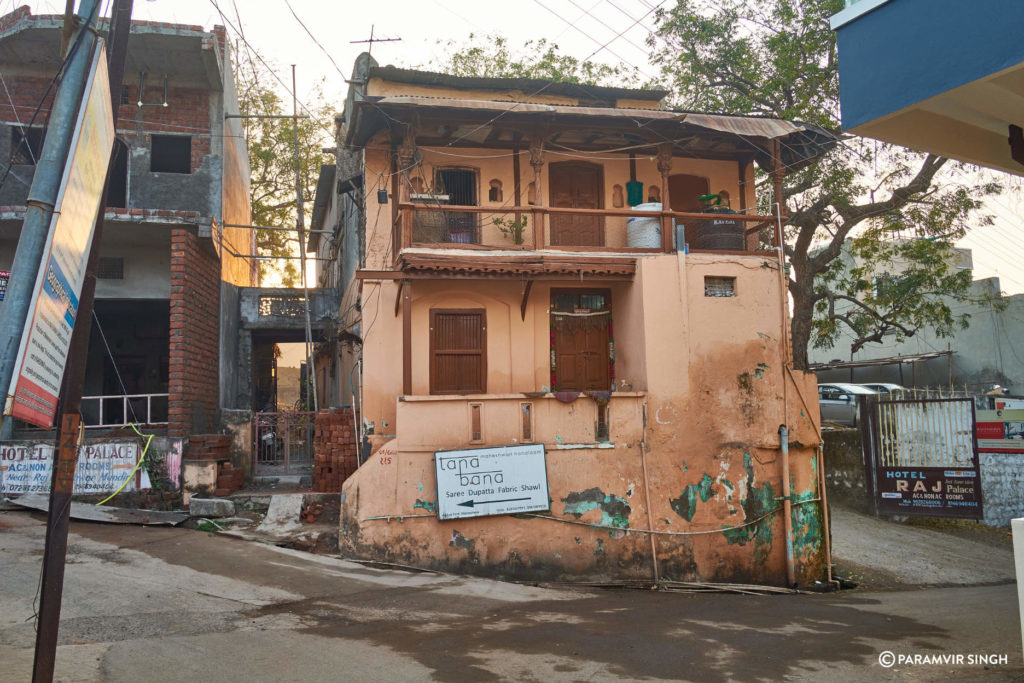
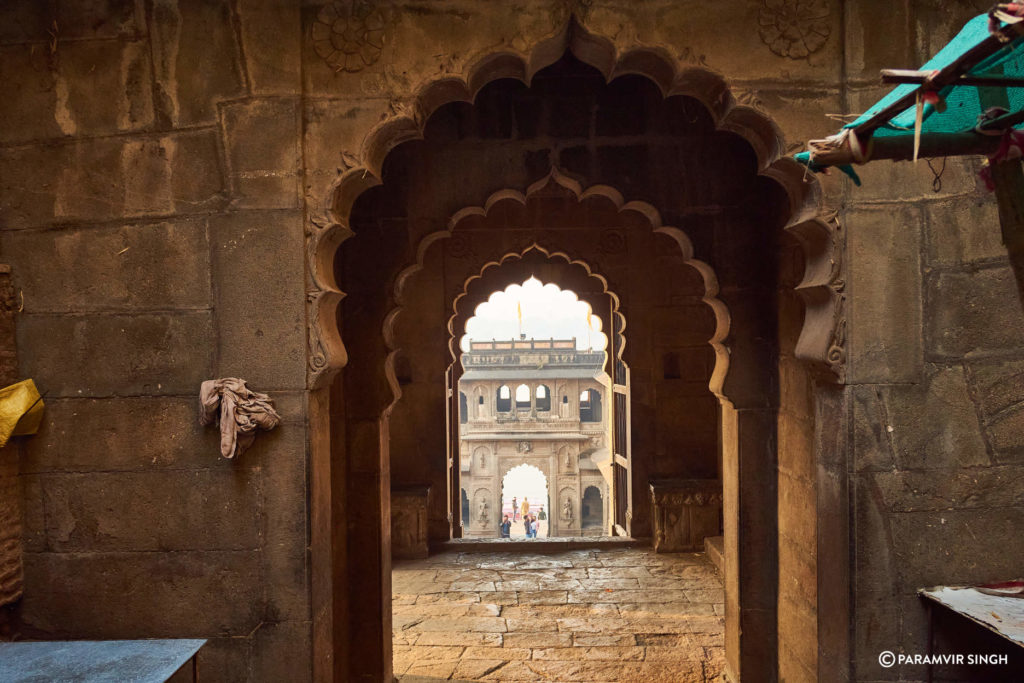
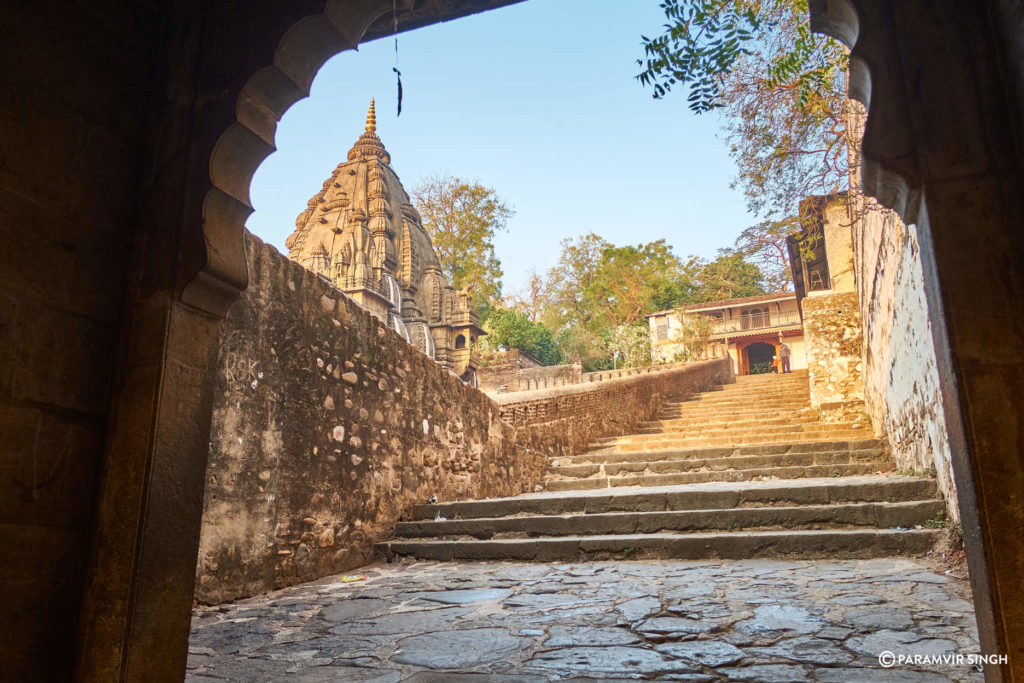
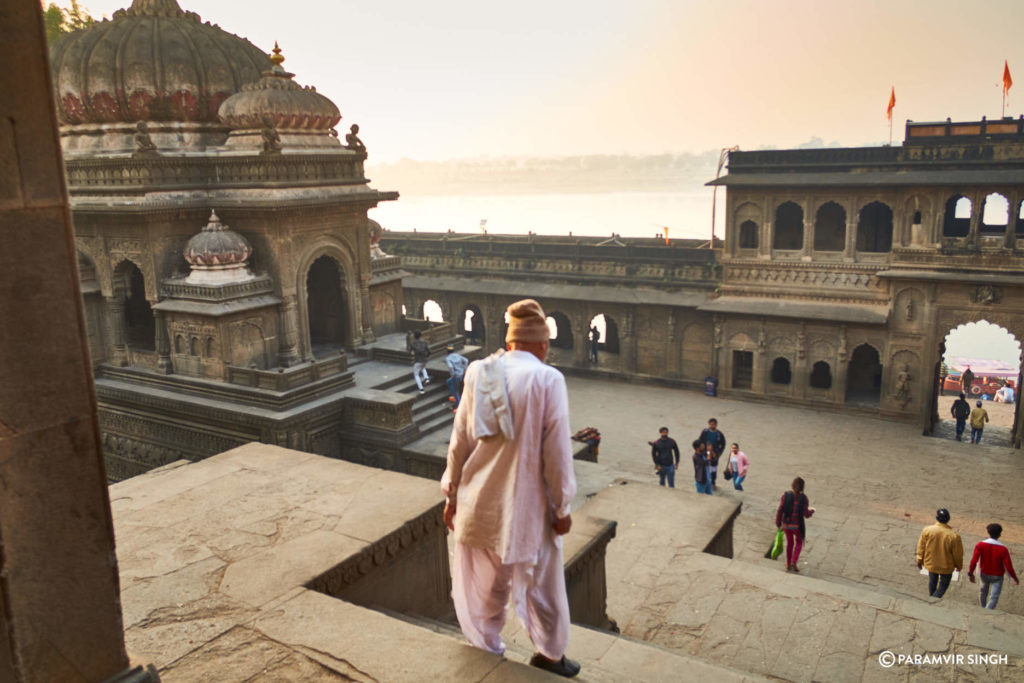
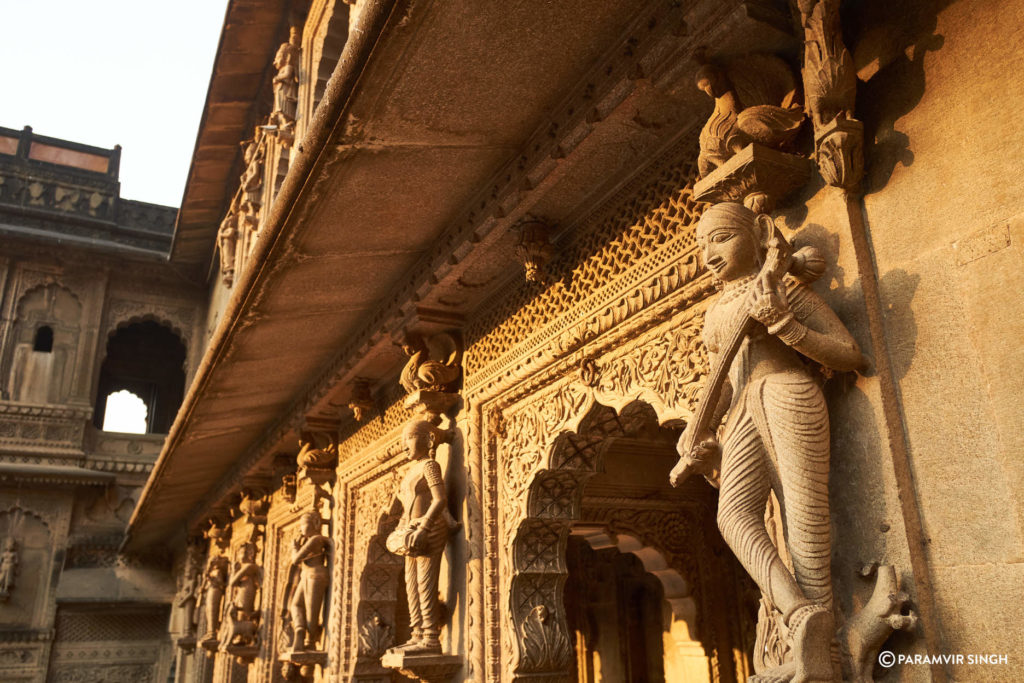
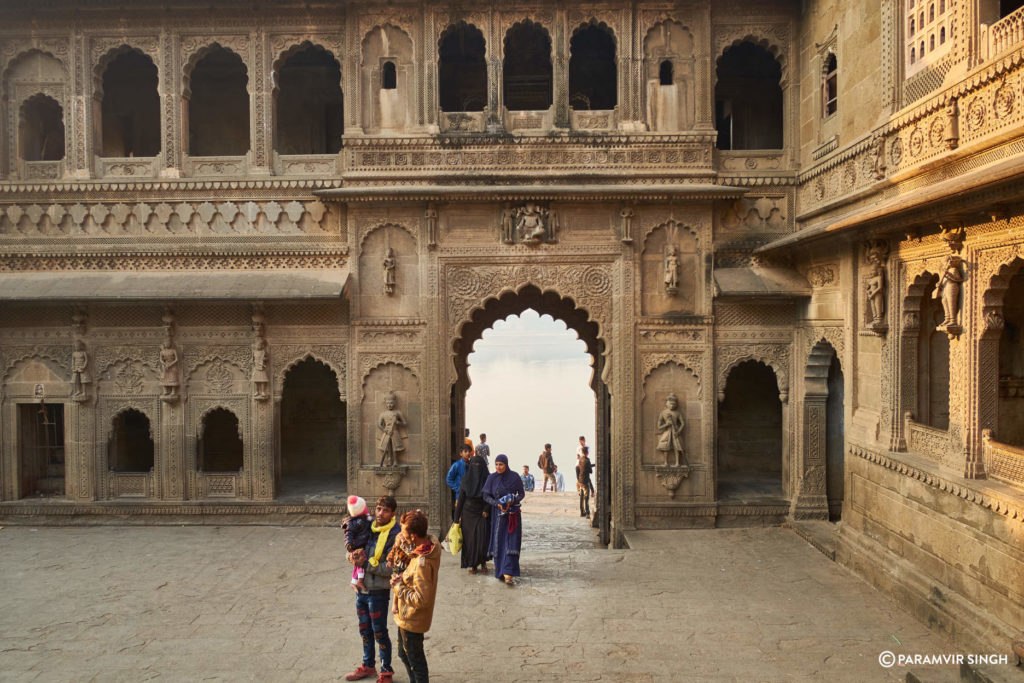
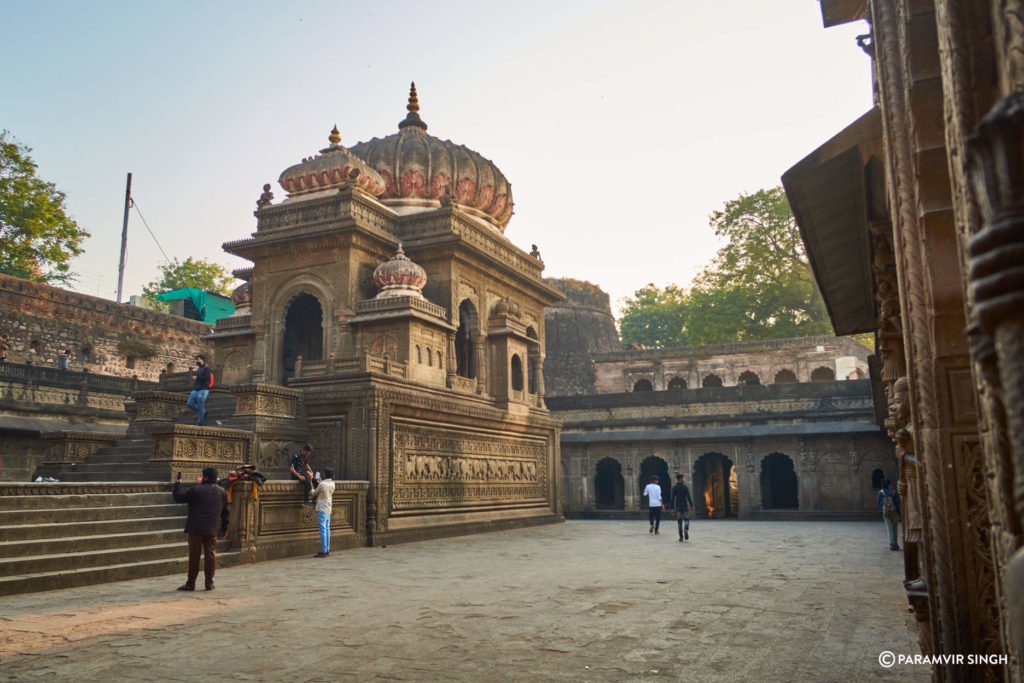
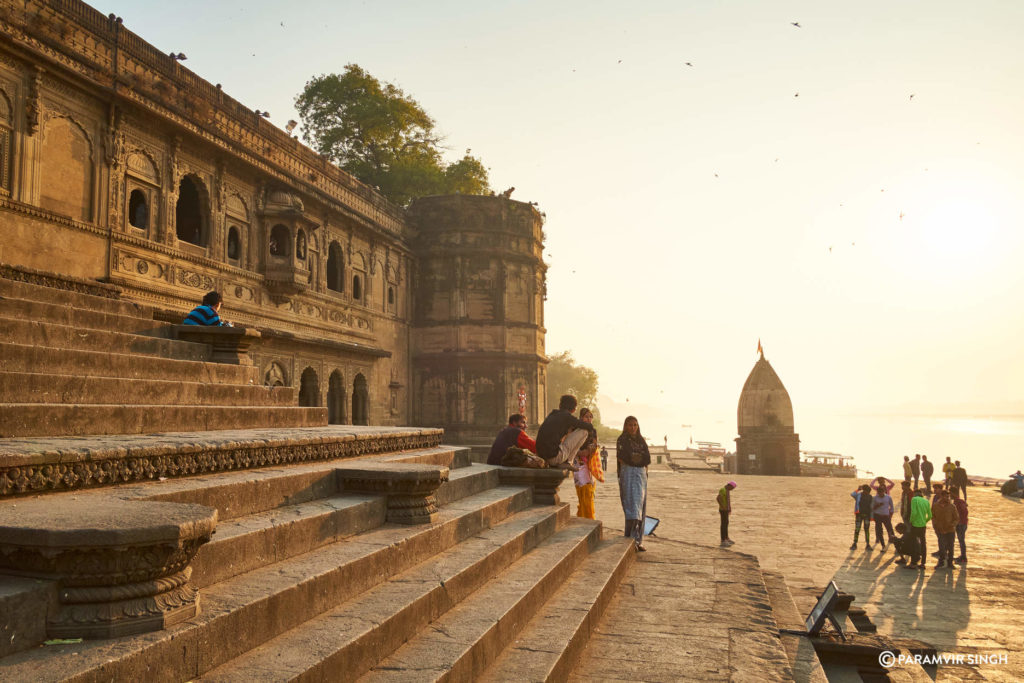
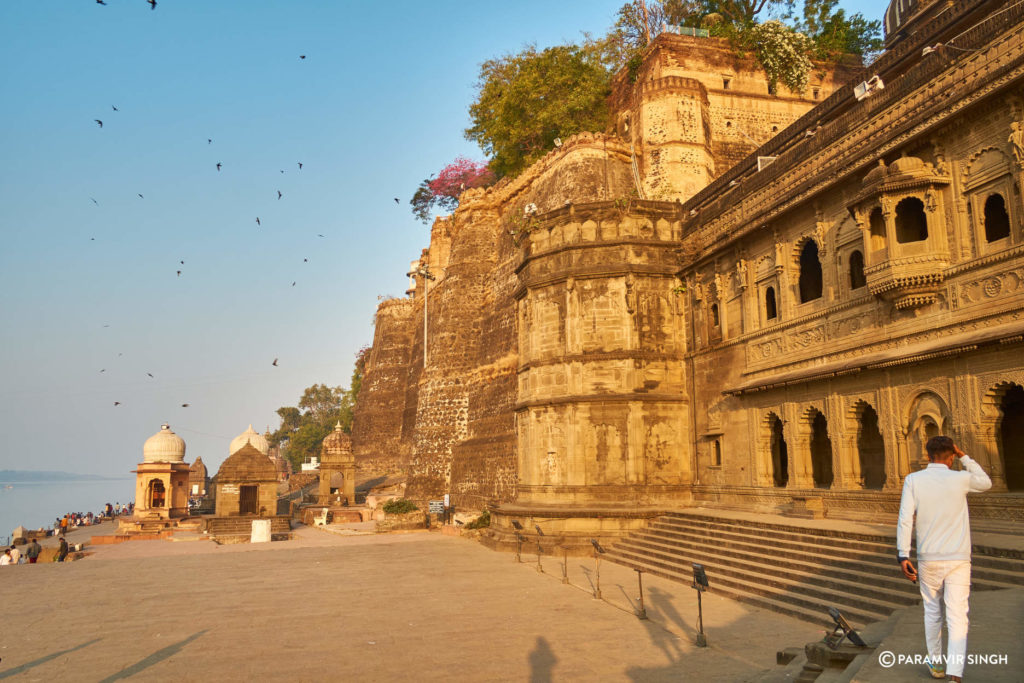
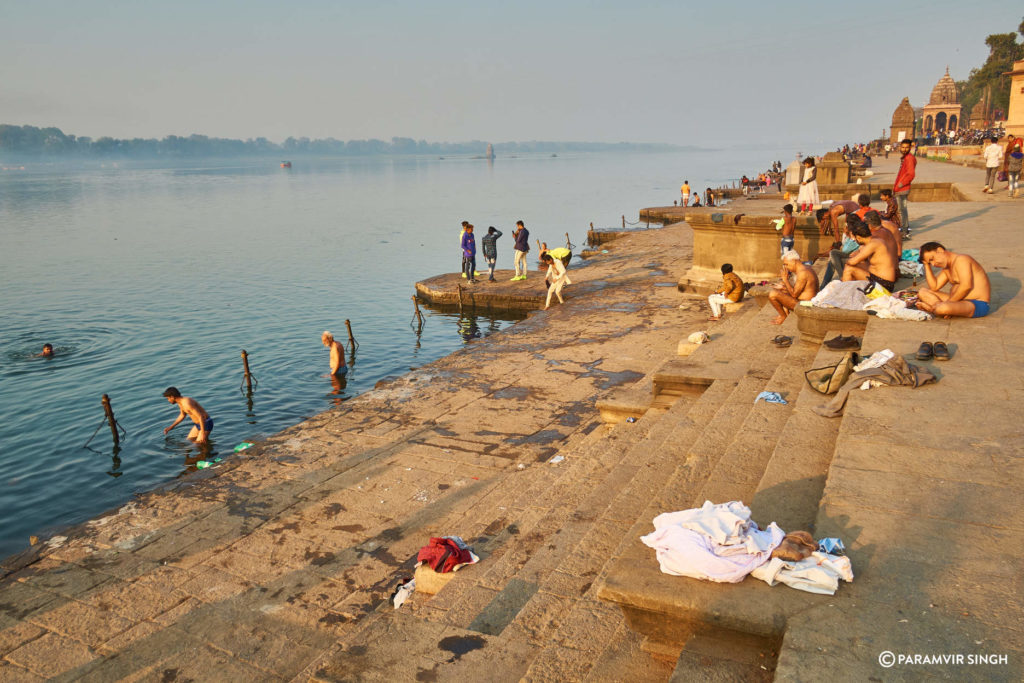
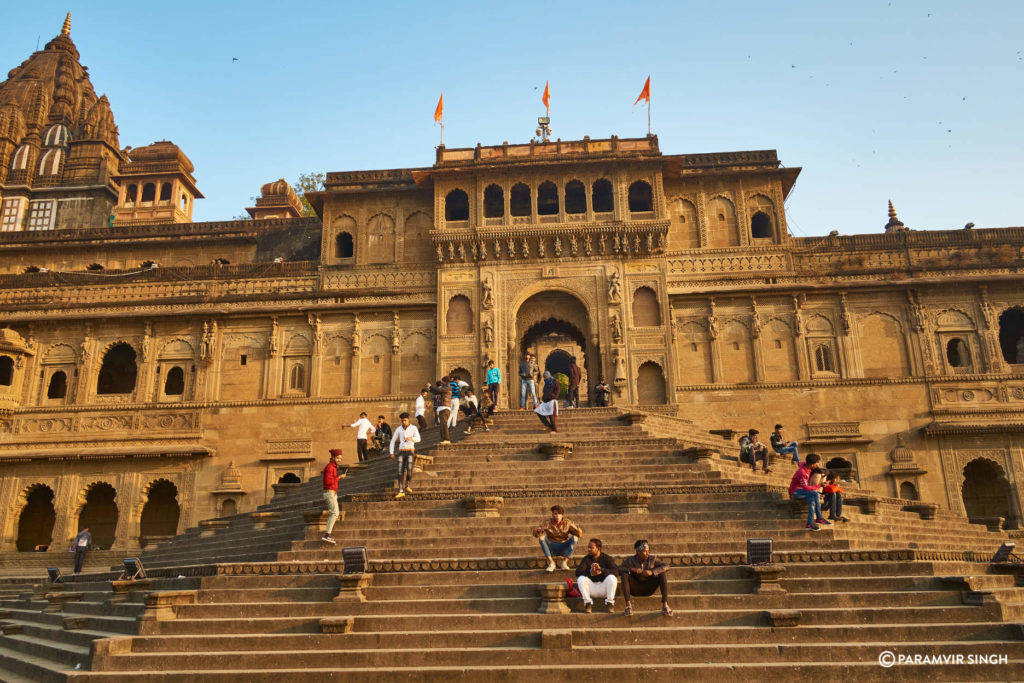
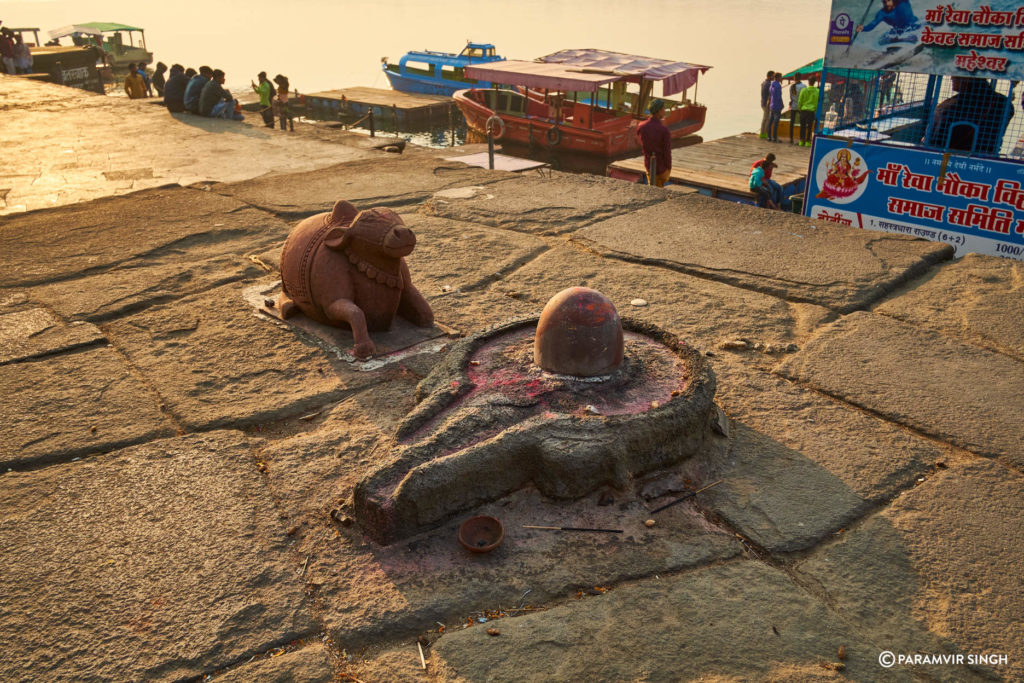
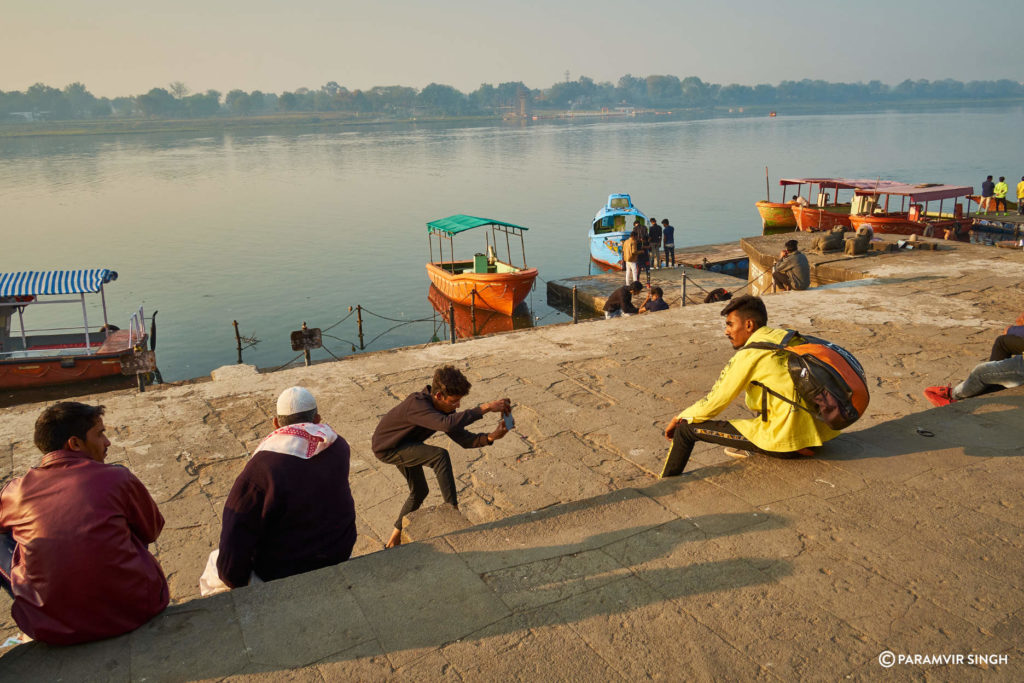
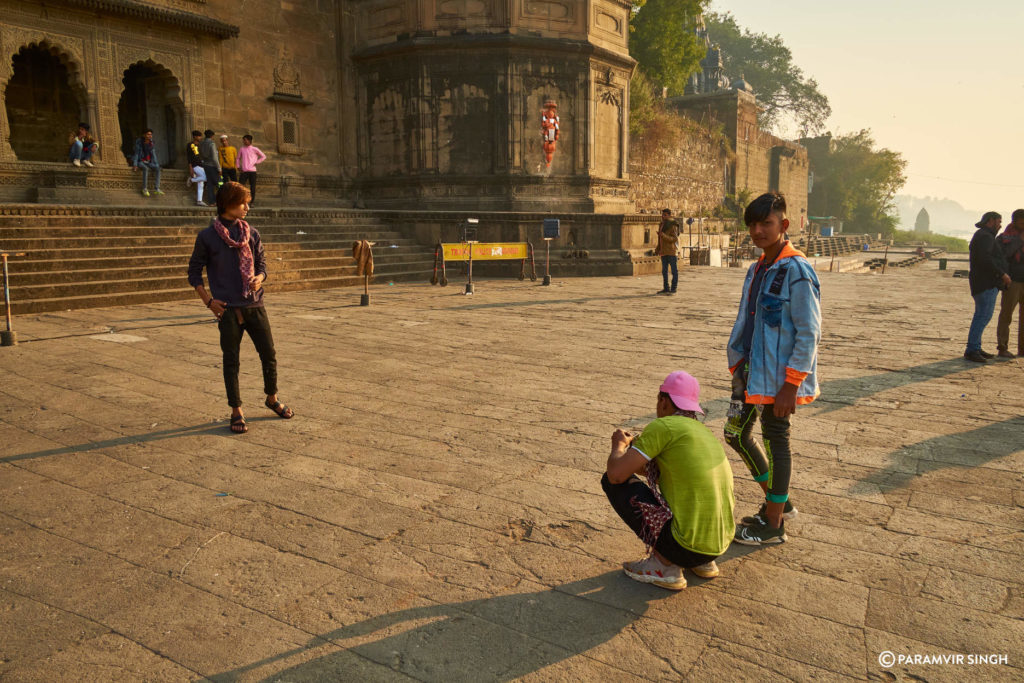
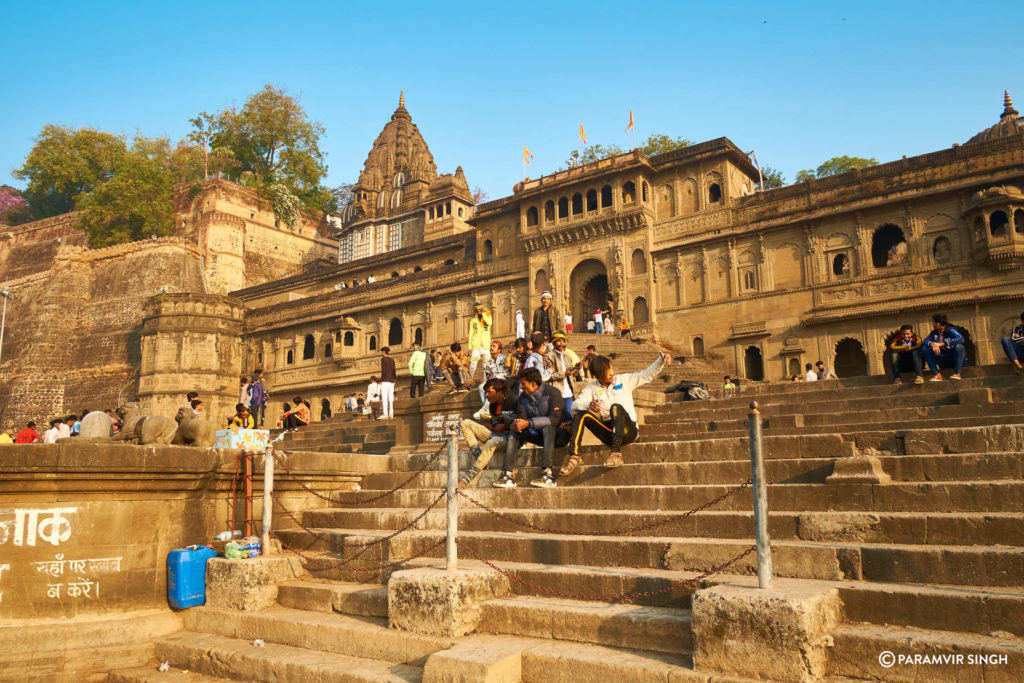
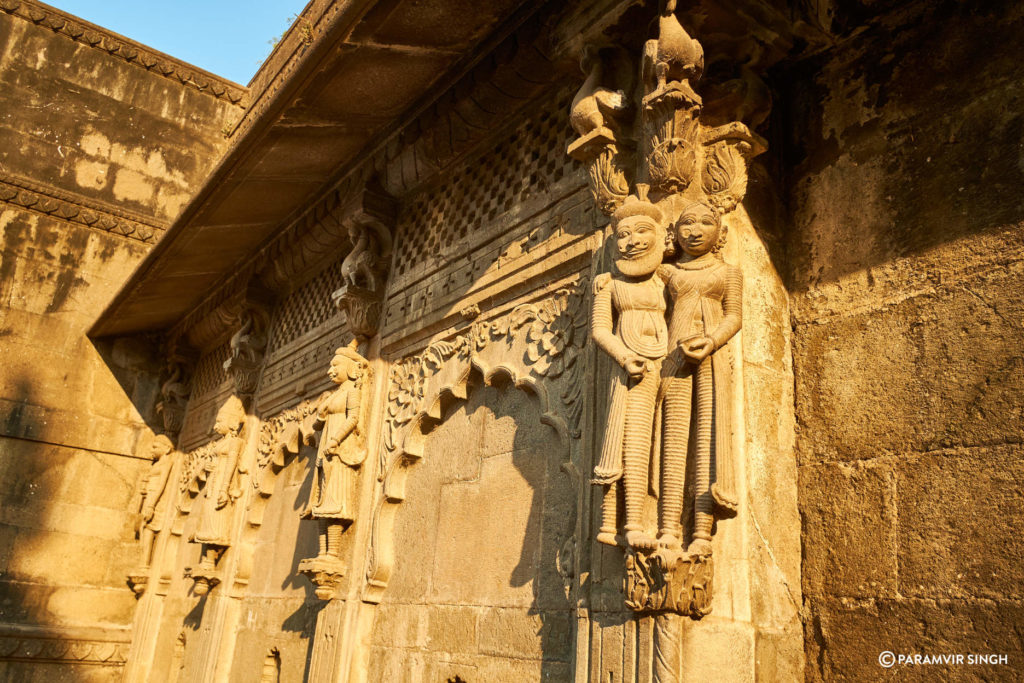
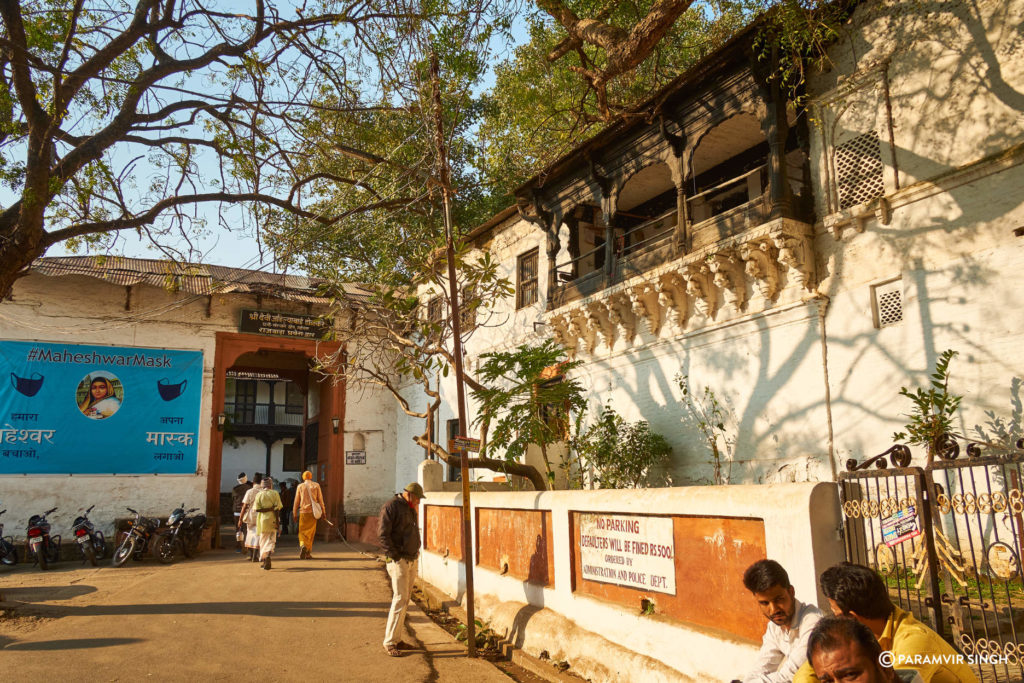
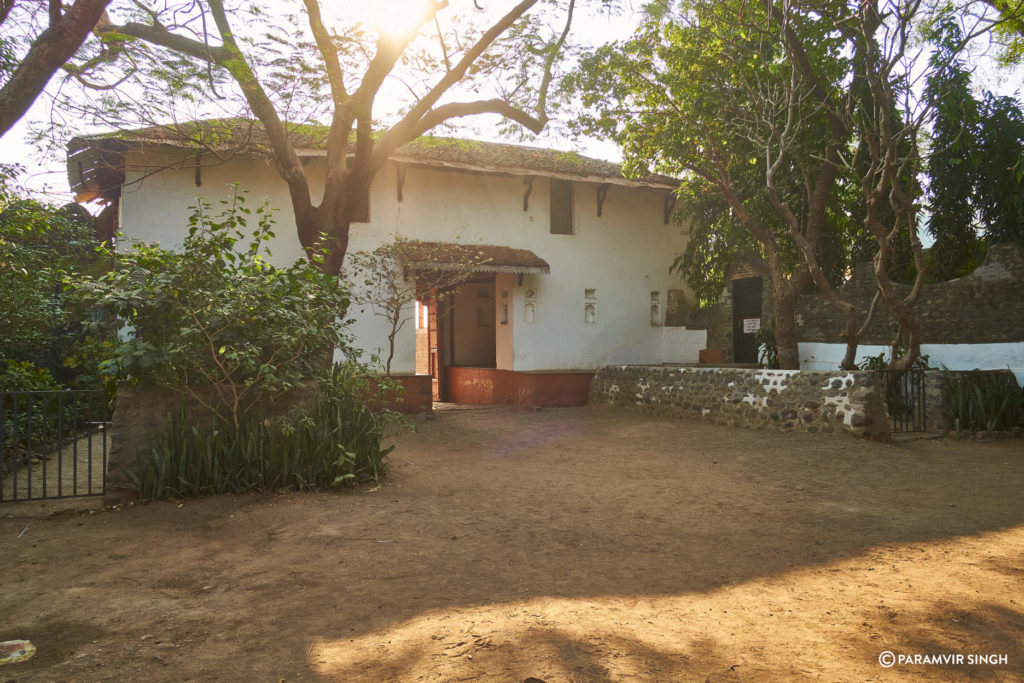
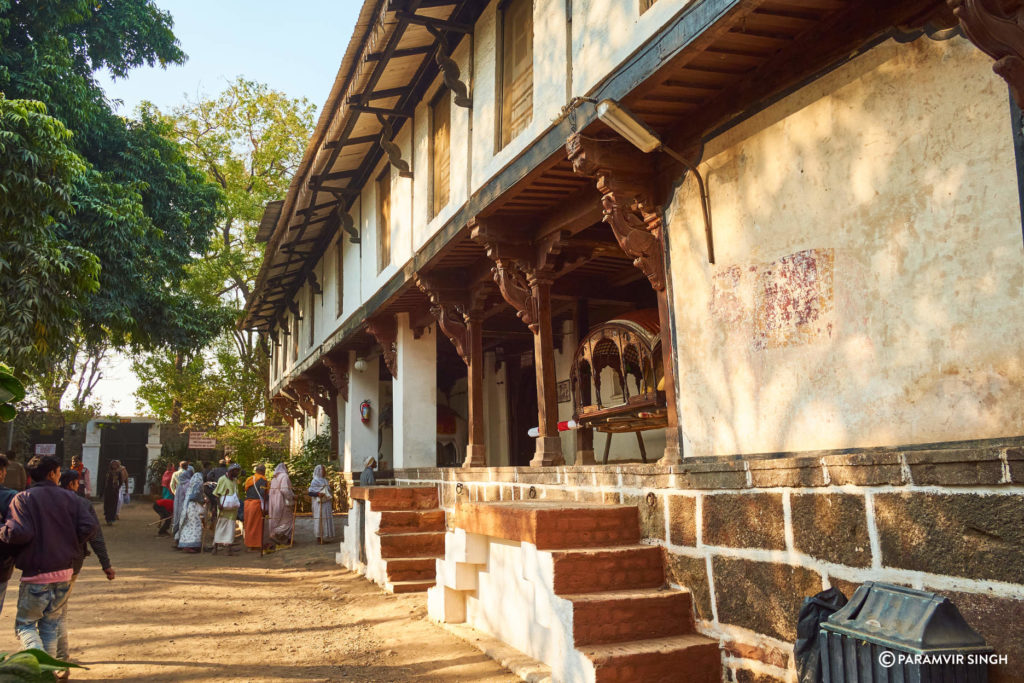
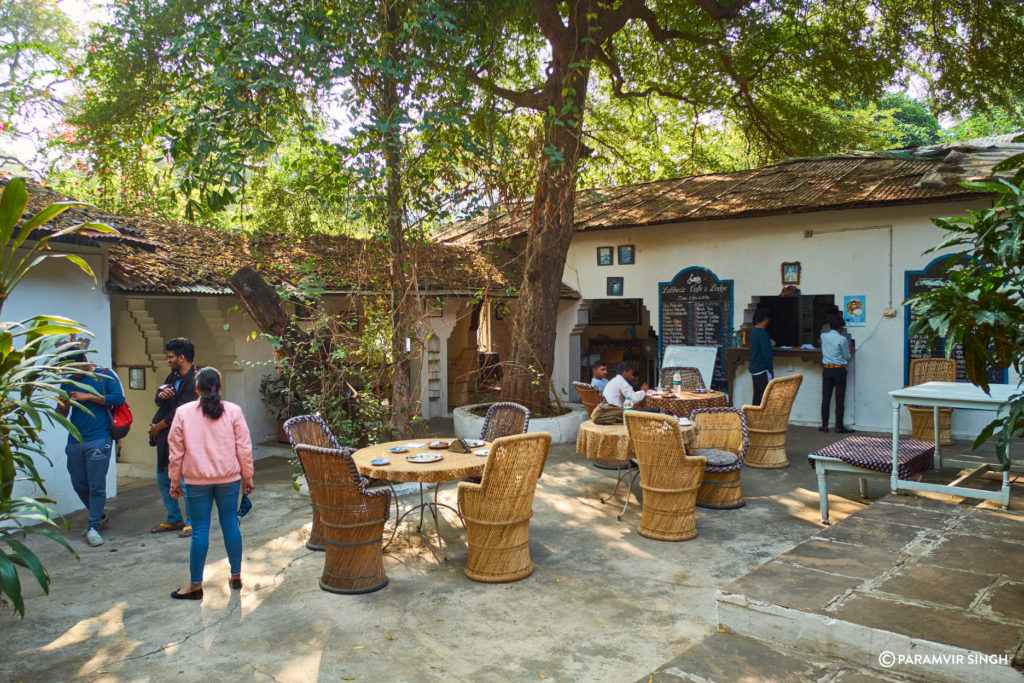
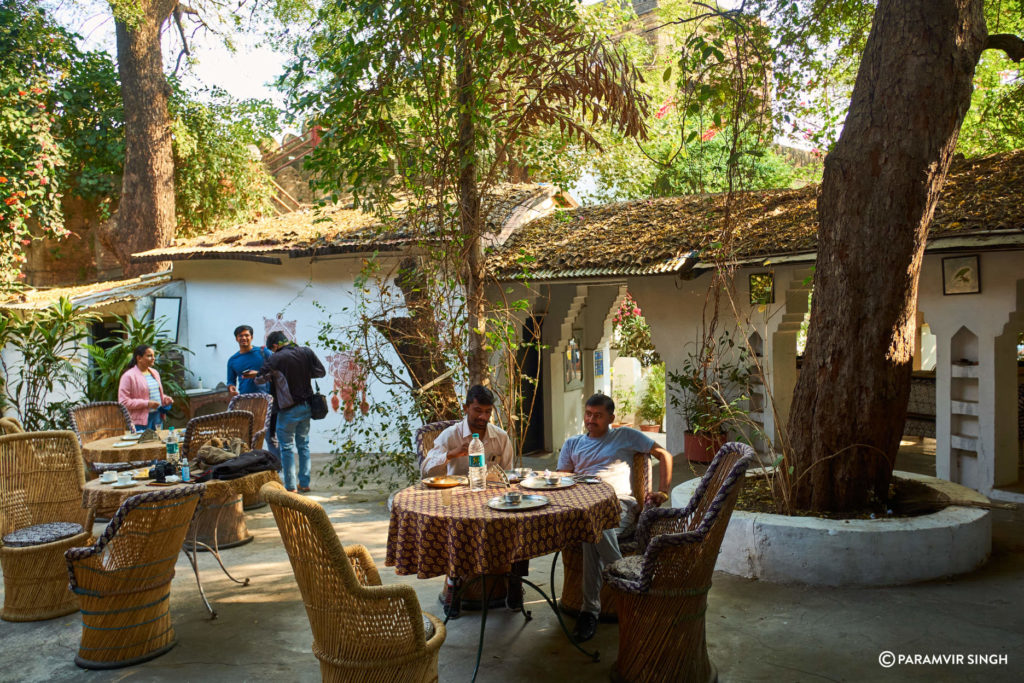
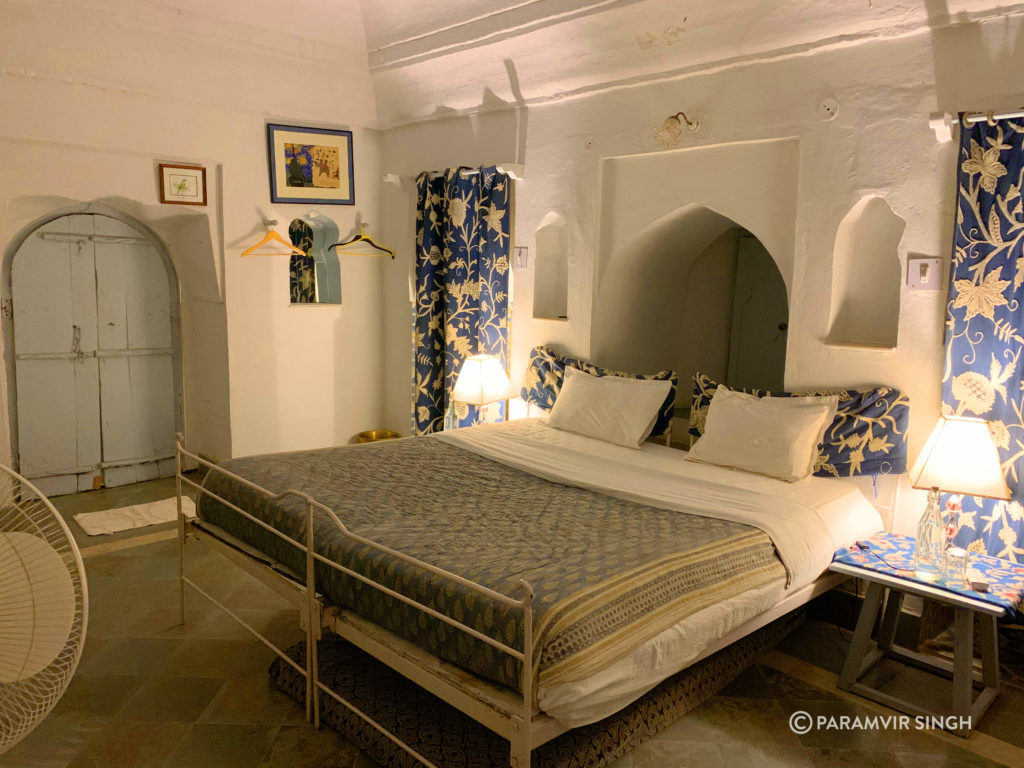
How To Reach : Maheshwar is some 500km from Mumbai. 90km from Indore (which has busy airports and railway stations). The nearest train station is Barwaha.
When To Visit: Maheshwar is located in Central India which gets very hot in the summers. Since most of the town needs to be visited on foot, summers (March – July, then September and October) isn’t the best time to visit. Winters are better (November till February) and monsoons may also be nice (July and August).


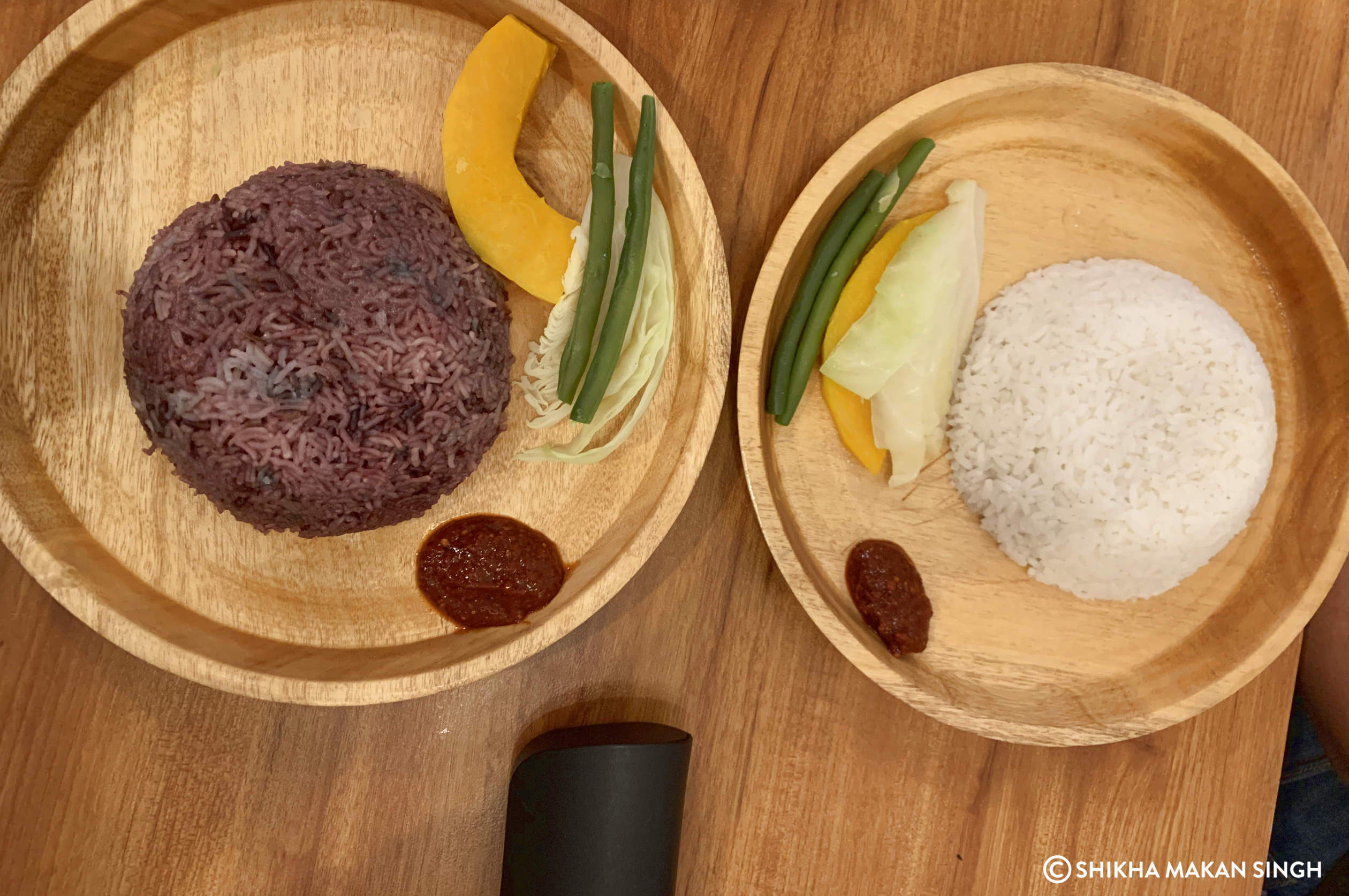
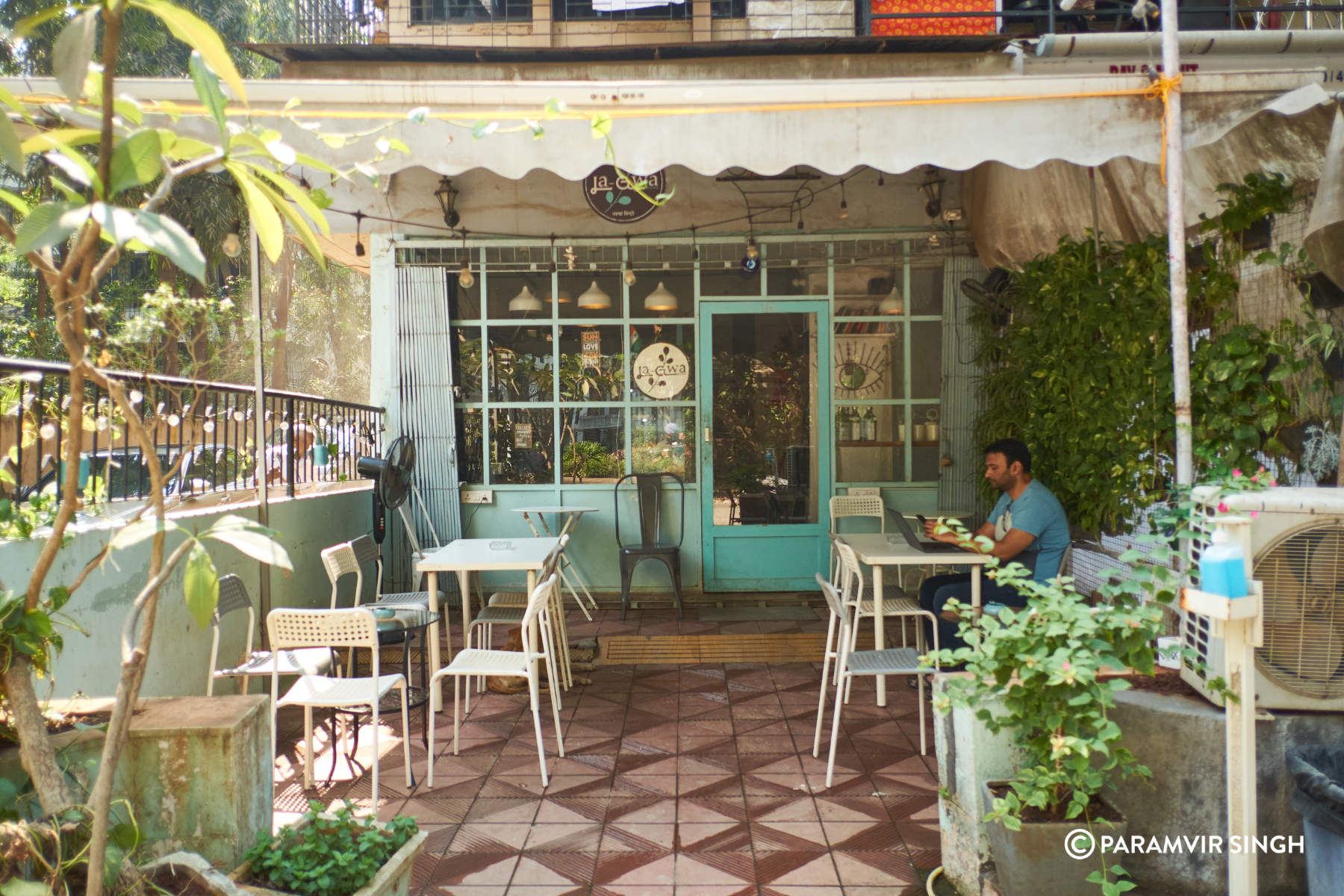
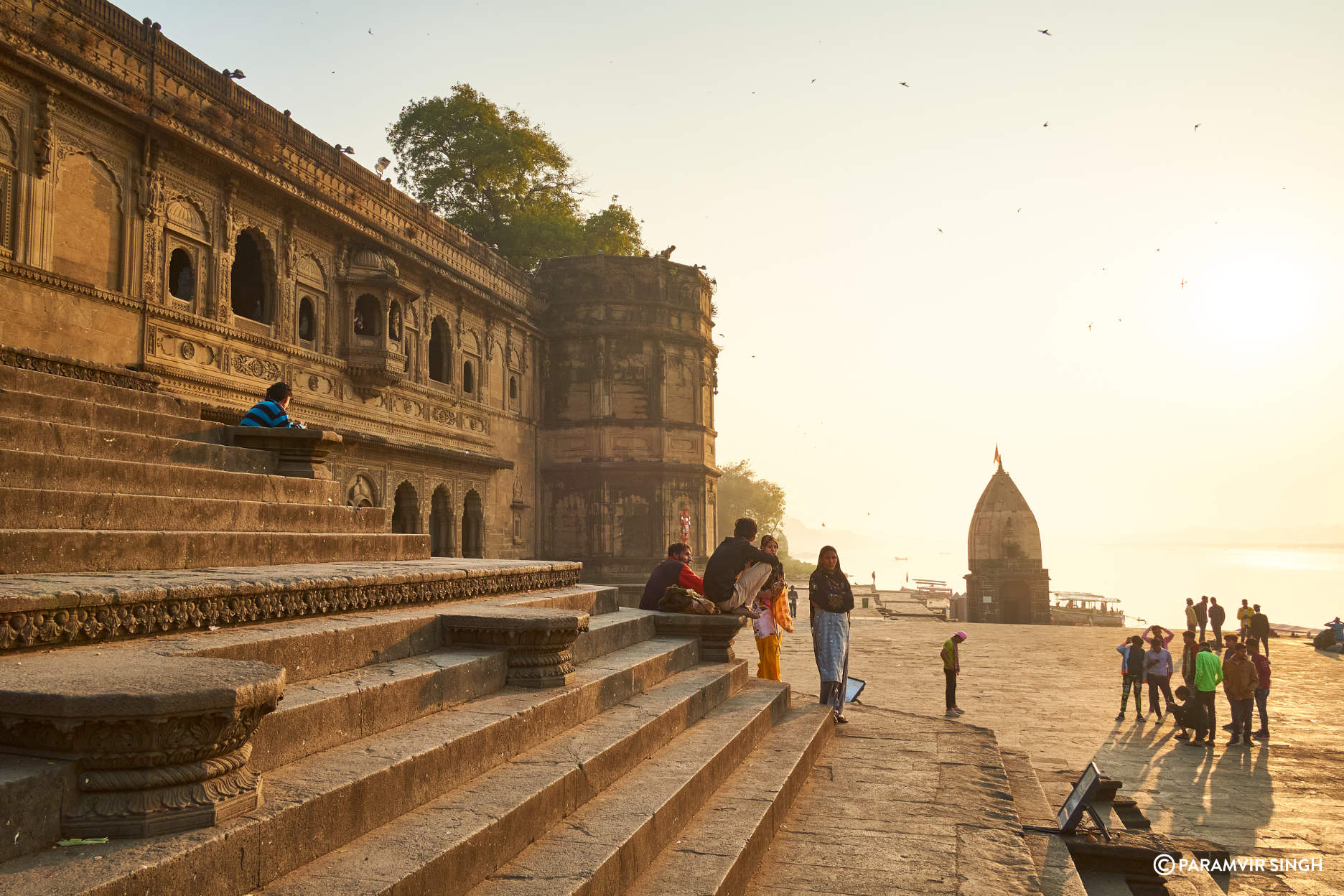
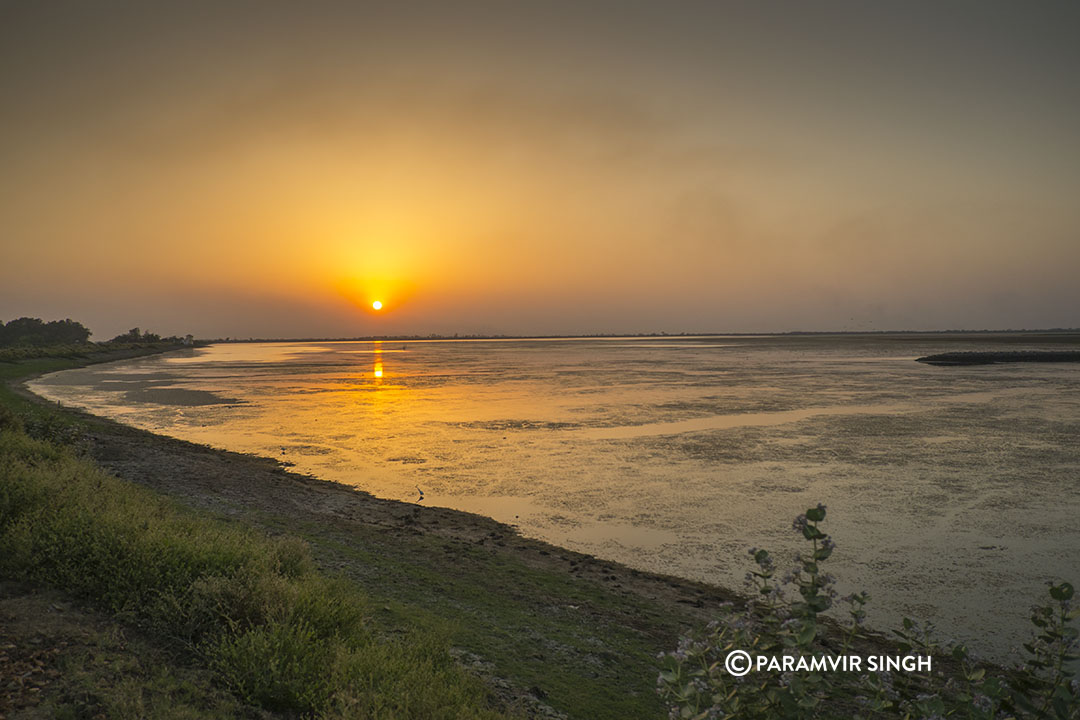
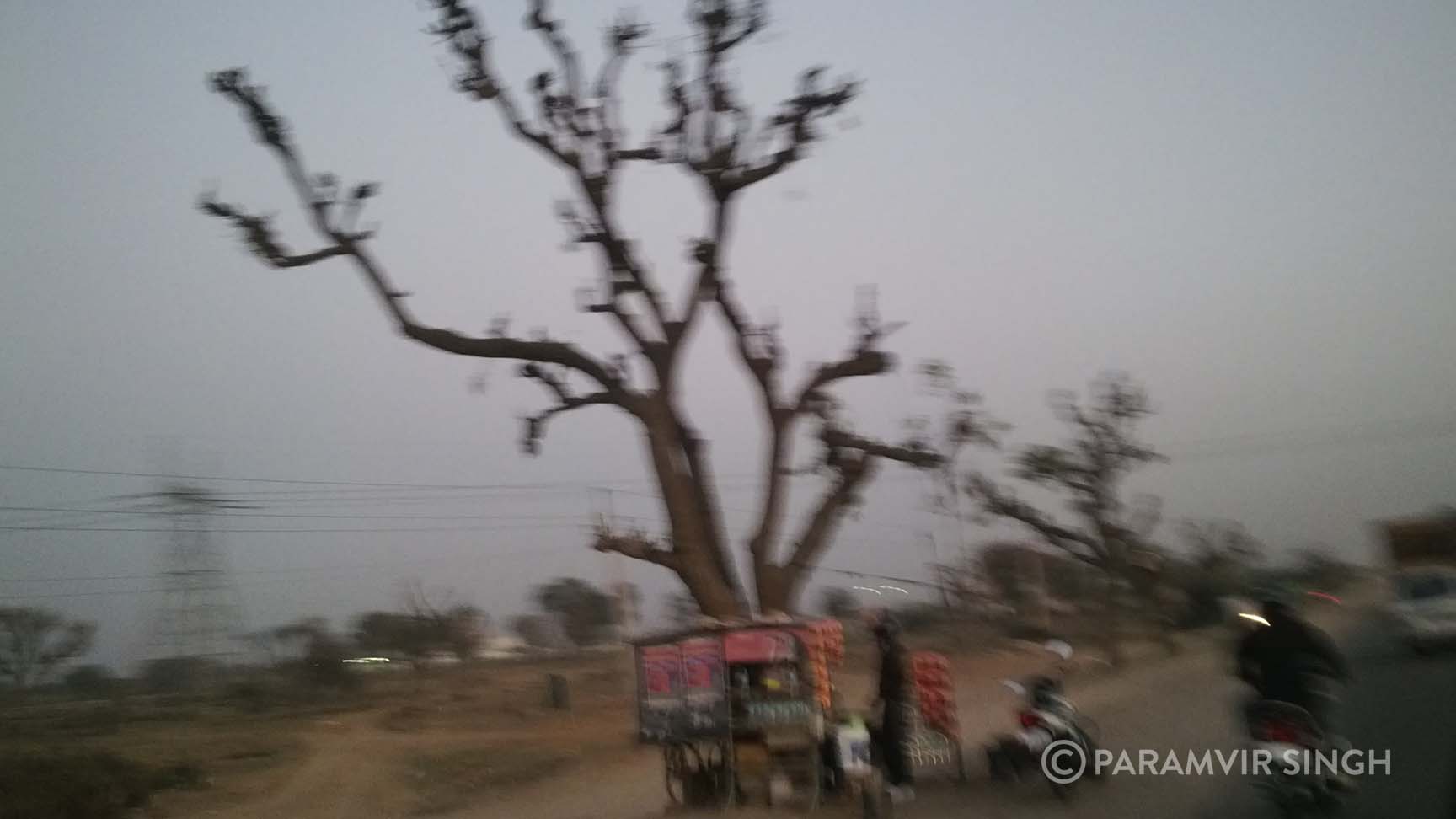
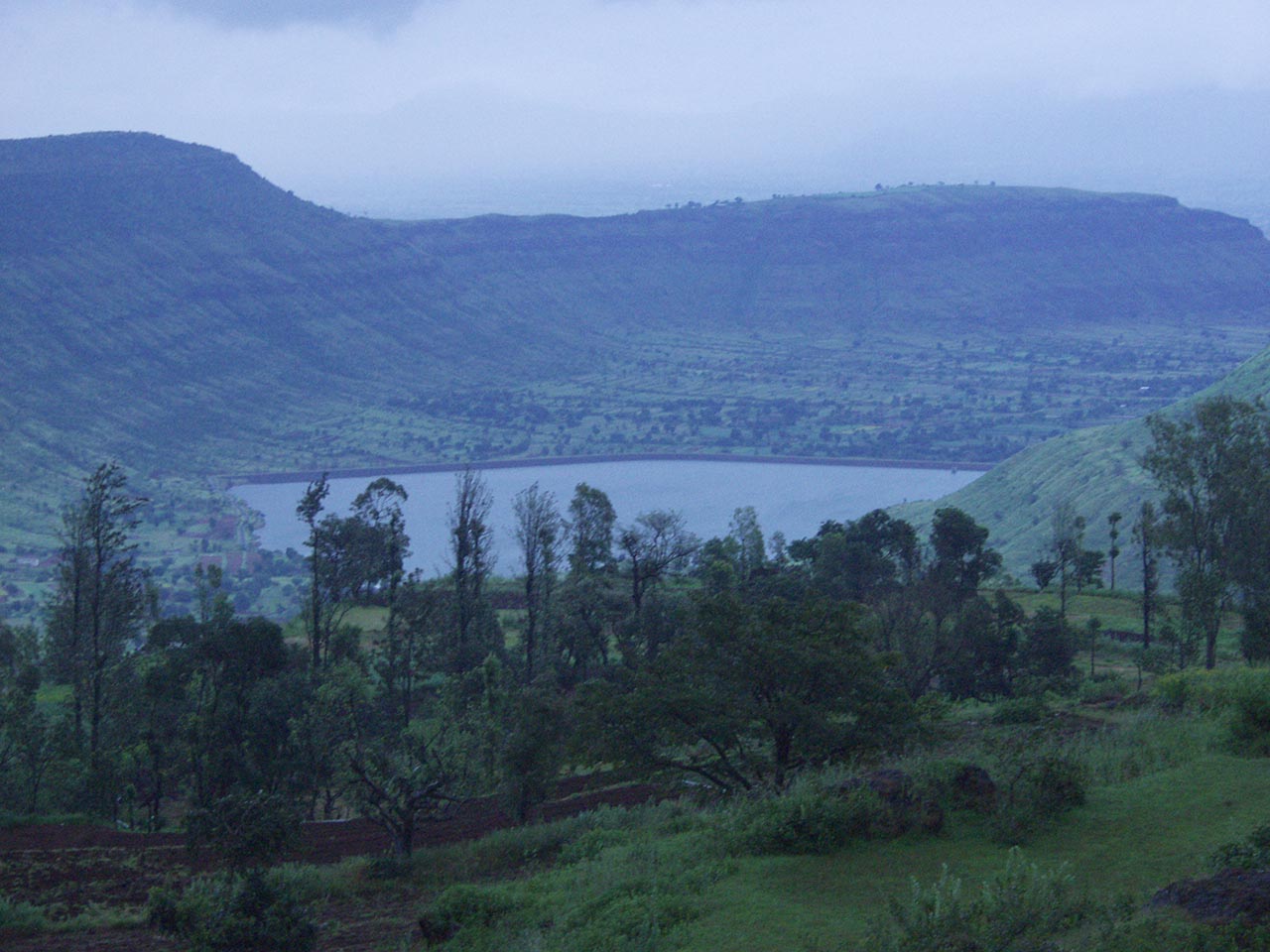
Labbooz does look charming and the Maheswar Fort is a kind of place I’d love to visit in my travels. However, those figurines of musicians remind me of the images I saw of Odisha’s Konark Sun Temple’s terrace of musicians. Fascinating!
Superb Blog! Loving these gorgeous photographs 🙂
Thanks Vipin!
I have never heard of this place, it seems wonderful. Pictures are great too, I hope you had a good time.